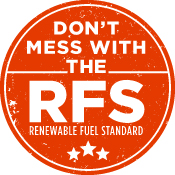 NREL is hosting a free Webinar, “Shared Solar Continues to Trend: Market Update and Implementation Questions,” June 18, 2015 from 2:00–3:00 p.m. ET. In this webinar, Adam Capage, will discuss answers to some of the most frequently asked questions related to utilities and their move to community solar. Questions that will be answered include how to mitigate supply risks, how to set pricing, and best practices for marketing. David Feldman will present his recent forecast of community solar market potential through 2020.
NREL is hosting a free Webinar, “Shared Solar Continues to Trend: Market Update and Implementation Questions,” June 18, 2015 from 2:00–3:00 p.m. ET. In this webinar, Adam Capage, will discuss answers to some of the most frequently asked questions related to utilities and their move to community solar. Questions that will be answered include how to mitigate supply risks, how to set pricing, and best practices for marketing. David Feldman will present his recent forecast of community solar market potential through 2020.- A week after the G7 Summit and in advance of COP21 (the UN Climate Change Conference in Paris in late 2015), renowned experts met at the first-ever Berlin Investment Forum. Organized by Der Tagesspiegel newspaper and Wermuth Asset Management around the theme of “Climate Change and Global Asset Allocation,” 150 delegates discussed the impacts of climate change as well as financial opportunities and risks posed by the worldwide energy transition.
- Whirlpool Corporation has broken ground on the Findlay Wind Farm, an $18 million “Wind for Industry” project, financed by One Energy, which provides energy solutions for large electric consumers. The wind farm will have five wind turbines with Whirlpool utilizing two and nearby Ball Company using three. The turbines are expected to offset an estimated 22% of the Whirlpool’s electric consumption.
- For the fifth year in a row, Georgia Power is joining with other energy companies, auto manufacturers and Commissioner Tim Echols of the Georgia Public Service Commission to support the Georgia Alternative Fuel Vehicle (AFV) Roadshow that is now underway. This year Georgia Power is highlighting its electric transportation program including EV charger rebates for residential and business customers and new public charging infrastructure currently being installed across the state.
Nebraska Governor Visits Novozymes
Nebraska Governor Pete Ricketts wrapped up his first agricultural trade mission this week with a visit to Novozymes world headquarters in Denmark, where a company tour showcased the production of unique enzymes and microbial products used in the animal nutrition, agriculture, and biofuels industries.
While at Novozymes, Gov. Ricketts and the United States Ambassador to Denmark hosted a roundtable on renewable fuels and bio-products where Nebraska delegates “showcased the dynamic interaction between the corn, cattle, and ethanol sectors and their important roles in Nebraska’s success in agriculture.”Industry representatives presented U.S. market trends and regulations to the group, with a focus on co-products, revenue opportunities, and biorefinery developments. In addition to the governor, Nebraska roundtable participants included Department of Economic Development Director Brenda Hicks-Sorensen, KAAPA President and Nebraska Ethanol Board representative Paul Kenny, Green Plains Energy COO Jeff Briggs and Bret Wyant with American Laboratories. European company executives included representatives from Novozymes, Dong Energy, Leifmark, Renew Energy, DuPont, and the U.S. Embassy.
The Governor and mission members also met with Novozymes CEO Peder Holk Nielsen and Executive Vice Presidents of Business Development and Supply Operations Thomas Videbaek and Thomas Nagy to discuss business development and international expansion. Ricketts says the Renewable Fuel Standard (RFS) was a concern as they discussed expansion plans in the United States. “With the EPA changing the rule, pulling the rug out from under our ethanol producers, by changing the RFS they’ve created uncertainty,” said Ricketts. “That uncertainty is impacting Novozymes as it’s impacting the rest of the industry.”
Novozymes opened its newest advanced manufacturing plant in Blair, Nebraska to make enzymes for biofuels production in 2012 in part because of strong policies like the RFS.
Listen to the governor’s summary of the trade trip here:Neb. Gov Pete Ricketts on trade trip wrap up
RFA Names New Communications Director
 A man with a professional background in ag communications is the new communications director for the Renewable Fuels Association. The group says Tony Jackson, a former Director of External Affairs for the U.S. Department of Agriculture’s Farm Service Agency and counsel for the U.S. House Agriculture Committee, is also a graduate of Boston College Law School.
A man with a professional background in ag communications is the new communications director for the Renewable Fuels Association. The group says Tony Jackson, a former Director of External Affairs for the U.S. Department of Agriculture’s Farm Service Agency and counsel for the U.S. House Agriculture Committee, is also a graduate of Boston College Law School.
“We are thrilled to have Tony joining our remarkable team,” said RFA President and CEO Bob Dinneen. “With his extensive communications and policy background, Tony will be a tremendous asset to RFA in its efforts to tell the story of how the U.S. ethanol industry is bolstering rural economies and assisting our nation to become more energy independent.”
“I am excited about the opportunity to be a part of the RFA team,” Jackson said. “I look forward to using my skills to amplify RFA’s voice, and to help our nation to become cleaner, safer, and more energy independent.”
Jackson will be responsible for developing and managing the full range of RFA’s communications efforts, including advocacy-oriented communications approaches, traditional and social media strategies, and brand awareness.
Syngenta Works with Iowa FFA for Ethanol
![]() Syngenta is partnering up with Iowa FFA chapters to support ethanol. This company news release says the developer of the corn ethanol feedstock Enogen will be at the American Ethanol 200 with the FFA members to raise money and awareness for flex fuels – and the farm group.
Syngenta is partnering up with Iowa FFA chapters to support ethanol. This company news release says the developer of the corn ethanol feedstock Enogen will be at the American Ethanol 200 with the FFA members to raise money and awareness for flex fuels – and the farm group.
The American Ethanol 200 is a 200-lap NASCAR Camping World Truck Series race honoring American-grown ethanol and presented for the third consecutive year by Enogen® corn enzyme technology. Money raised for flex fuel infrastructure by FFA members at the Iowa Speedway on race day will be matched by Syngenta, with a portion of the proceeds going to participating FFA chapters.
“Engaging the public about ethanol and renewable fuels is a good opportunity for my students,” said Miranda Johnson, advisor of the Twin Cedars FFA Chapter. “They are the future and they understand the importance of conservation and preservation of our land and resources – and the vital role farmers play in feeding and fueling our country.”
According to Jack Bernens, head of Enogen at Syngenta, the ethanol industry since its inception has had a profoundly positive impact on the U.S. economy and on rural America.
“Ethanol has enlarged and strengthened the market for American-grown corn, adding jobs in rural communities and spurring the innovation of new technologies,” he said. “Syngenta is pleased to again be partnering with local FFA chapters at the American Ethanol 200 presented by Enogen to help spread the word about the importance of American ethanol and the need for increased flex fuel infrastructure. It’s inspiring to see FFA members embracing renewable fuels and helping to tell its story.”
Bernens added that investments in flex fuel pump infrastructure are necessary to help grow the market for American ethanol.
Celebrate Global Wind Day
Today is Global Wind Day. Coordinated by the Global Wind Energy Council along with the European Wind Energy Association (EWEA), this year the groups are partnering with SolutionWind, a worldwide wind awareness campaign promoting the use of wind power leading up to COP21 climate negotiations in Paris in December.
 Global Wind Day is a day for “discovering wind energy, its power and the possibilities it holds to reshape our energy systems, decarbonise our economies and boost jobs and growth”. This is also a day the wind industry is honoring the companies who have committed to using wind energy to power their operations.
Global Wind Day is a day for “discovering wind energy, its power and the possibilities it holds to reshape our energy systems, decarbonise our economies and boost jobs and growth”. This is also a day the wind industry is honoring the companies who have committed to using wind energy to power their operations.
According to EWEA, wind power is one of the fastest growing industrial sectors globally attracting $100 billion in investment in 2014. Research also shows that onshore wind power is now cheaper than conventional energy sources in an expanding number of markets worldwide.
“Climate change is happening faster than expected, but so is the transition to renewable energy. As businesses become increasingly aware of the progress in technology and falling costs we are seeing a rapid change in investment patterns,” said Steve Sawyer, secretary general of the Global Wind Energy Council. “Companies like IKEA pave the way for a fossil free future and give an important example for others to follow.”
USDA Taking Apps for Biofuels Infrastructure Funding
 USDA’s Commodity Credit Corporation (CCC) is now accepting applications in 50 states, the Commonwealth of Puerto Rico and Washington, D.C. for up to $100 million in grants under the Biofuels Infrastructure Partnership (BIP). The funding is to support the infrastructure needed to make more renewable fuel options available to American consumers. The Farm Service Agency will administer BIP.
USDA’s Commodity Credit Corporation (CCC) is now accepting applications in 50 states, the Commonwealth of Puerto Rico and Washington, D.C. for up to $100 million in grants under the Biofuels Infrastructure Partnership (BIP). The funding is to support the infrastructure needed to make more renewable fuel options available to American consumers. The Farm Service Agency will administer BIP.
Through BIP, USDA will award competitive grants, matched by states, to expand the infrastructure for distribution of higher blends of renewable fuel. These competitive grants are available to assist states, the Commonwealth of Puerto Rico and Washington, D.C. with infrastructure funding. States that offer funding equal to or greater than that provided by the federal government will receive higher consideration for grant funds. States may work with private entities to enhance their offer.
CCC funds must be used to pay a portion of the costs related to the installation of fuel pumps and related infrastructure dedicated to the distribution of higher ethanol blends, for example E15 and E85, at vehicle fueling locations. The matching contributions may be used for these items or for related costs such as additional infrastructure to support pumps, marketing, education, data collection, program evaluation and administrative costs.
This new investment seeks to double the number of fuel pumps capable of supplying higher blends of renewable fuel to consumers. This will expand markets for farmers, support rural economic growth and the jobs that come with it, and ultimately give consumers more choices at the pump.
BioEnergy Bytes
 Buses powered completely by renewable energy will now be part of Gothenburg’s (Sweden) public transport system. Bus route 55 has three completely electrically driven buses and seven electric hybrid buses, all of them from Volvo Buses. The buses on the route, which runs from Chalmers Johanneberg to Chalmers Lindholmen, through the center of Gothenburg, are equipped with onboard wi-fi and phone charging facilities. The buses run on batteries that are quickly recharged with renewable electricity at the terminal stops.
Buses powered completely by renewable energy will now be part of Gothenburg’s (Sweden) public transport system. Bus route 55 has three completely electrically driven buses and seven electric hybrid buses, all of them from Volvo Buses. The buses on the route, which runs from Chalmers Johanneberg to Chalmers Lindholmen, through the center of Gothenburg, are equipped with onboard wi-fi and phone charging facilities. The buses run on batteries that are quickly recharged with renewable electricity at the terminal stops.- A team of motorsport enthusiasts will drive from Atlantic Coast of Florida to the Pacific Coast of California on just one tank of renewable fuel in June 21-26, 2015. This is made possible by NEXBTL renewable fuel that is produced from bio-based raw materials by Neste, the world’s largest producer of renewable diesel.
- The Waneta Expansion Limited Partnership, between Fortis Inc., Columbia Power Corporation and Columbia Basin Trust, has connected the 335 MW Waneta Expansion Project near Trail, British Columbia to the electrical grid. The plant is located on the border between Canada and the USA and is now generating power on the BC Hydro grid.
- The Sere Wind Farm from Eskom, located in the Western Cape of South Africa and developed by Eskom, the South African electricity public utility, recently achieved its full commercial operational capacity of a 100 MW. The African Development Bank approved in 2011 a USD 45 million loan with USD 50 million contribution from the Clean Technology Fund, one of the Climate Investment Funds (CIF) for this first utility scale renewable energy project. The World Bank and the French Development Agency also contributed to the financing of the project.
Nebraska Governor Talks Biofuels in Europe
“As the number two ethanol producer in the country, we have a big interest in seeing what we can do with ethanol and one of the concerns in the industry is being able to export,” said Ricketts during a conference call with reporters on Friday from Brussels. “We’re just starting the conversion with regard to how we can expand that and export our ethanol into the European Union.”
In Brussels, the trade team met with executives from Ghent Port Company, TOTCO, Sygenta Brussels, and a consultant for Belgian Biodiesel Board to promote Nebraska’s biofuels industry and build relations between firms in Europe and the U.S.
Neb. Gov Pete Ricketts discusses biofuels in EuropeCorn Growers Urge Comments on RFS
 The Environmental Protection Agency (EPA) has opened the public comment period on its proposal to cut corn ethanol in the Renewable Fuel Standard (RFS) by nearly 4 billion gallons. That’s prompting the National Corn Growers Association (NCGA) to urge farmers and their family and friends to email their opposition to this proposal as soon as possible, before the July 27 deadline.
The Environmental Protection Agency (EPA) has opened the public comment period on its proposal to cut corn ethanol in the Renewable Fuel Standard (RFS) by nearly 4 billion gallons. That’s prompting the National Corn Growers Association (NCGA) to urge farmers and their family and friends to email their opposition to this proposal as soon as possible, before the July 27 deadline.
“Last time, we were very clear to EPA about what we wanted,” said NCGA President Chip Bowling. “It is simple: EPA should follow the statute. For farmers and others in rural America, this new EPA proposal means low corn prices and ethanol plant and industry cutbacks. And for everyone, it means higher gas prices and dirtier air.”
This link while allow you to send a quick email: www.ncga.com/rfs. Various draft comments are available to enable both farmers and their non-farmer friends to easily send personalized notes to the EPA.
New Solenis’ Antibiotic-free Ethanol Fermentation Aids
Solenis announced during the recent Fuel Ethanol Workshop (FEW) the launch of a novel family of antibiotic-free fermentation aids to help ethanol producers improve efficiency of the ethanol production process. The aids also, said Solenis, will address consumer concerns about antibiotics in the food chain. While the ethanol produced from an ethanol production plant is not ingested, one byproduct is distillers grains (DDGs), an animal feed. Solenis said today’s typical fermentation processes control undesirable microorganisms using antibiotics, which remain in the resulting distillers grains. The company also launched a scale inhibitor during #FEW15.
“As consumer demands and regulatory requirements continue to become more stringent, current antimicrobials, and specifically antibiotics, may be further subject to maximum contaminate limits,” said Allen Ziegler, global biorefining marketing  director. “As a result, our new fermentation aids give fuel ethanol producers more tools to address undesirable microorganisms without antibiotics, while helping them boost production and satisfy consumers at the same time.”
director. “As a result, our new fermentation aids give fuel ethanol producers more tools to address undesirable microorganisms without antibiotics, while helping them boost production and satisfy consumers at the same time.”
According to Solenis, their family of fermentation aids, which includes three patented and patent-pending products, significantly enhances the ability of yeast to compete with undesirable microorganisms in the critical initial stages of propagation and fermentation without the use of antibiotics—an increasingly important goal for fuel ethanol producers.
Designed to promote beneficial yeast growth and efficiency in both high pH and standard pH fermentation processes, Solenis said their fermentation aids are based on advanced proprietary and targeted antimicrobial technology. While the products were initially developed for fuel ethanol production, they also have practical application in other commercial fermentation processes.
“We will continue to anticipate and proactively address our customers’ needs to optimize processes while staying ahead of evolving regulations,” added John Panichella, president and CEO. “With close to 100 years of experience in process and water treatment chemistries, Solenis is committed to serving the fuel ethanol and biorefining industries with our well-respected and diverse product line, along with our application expertise and our investment in research and development.”




